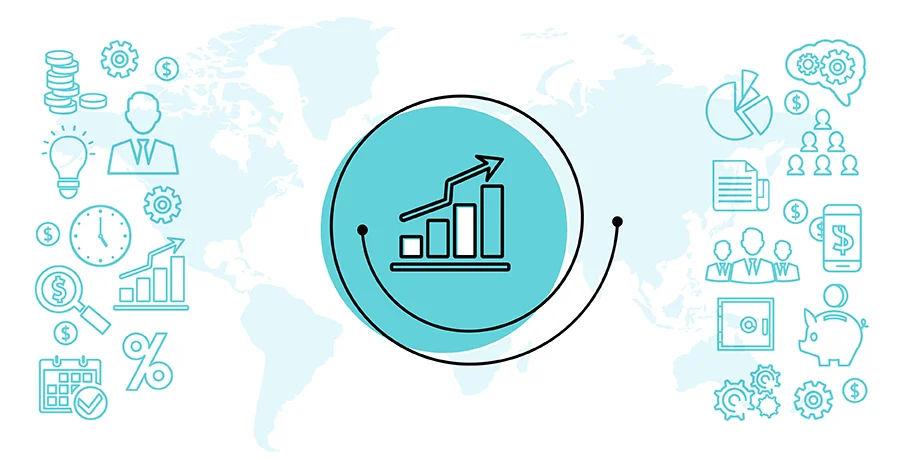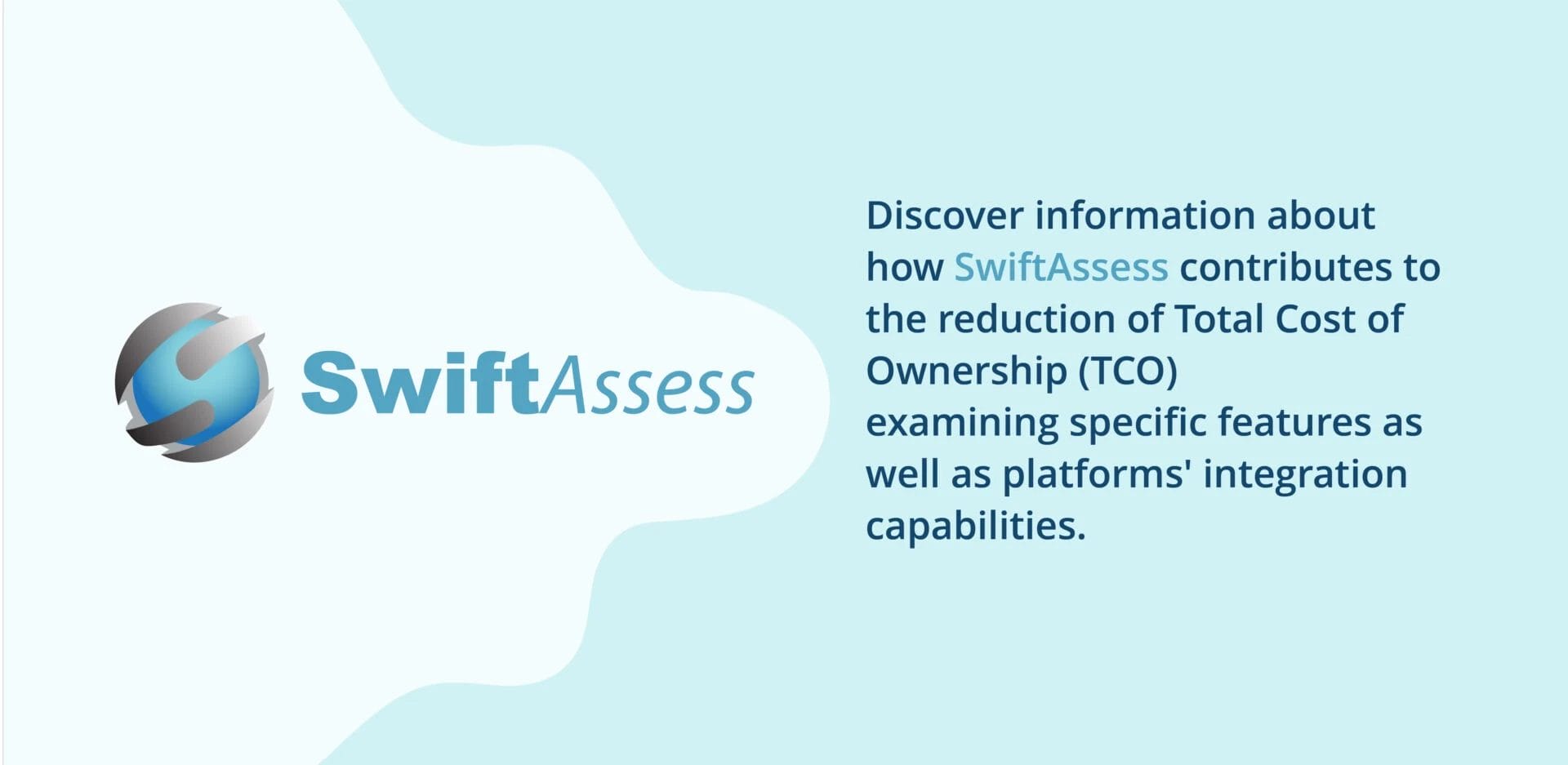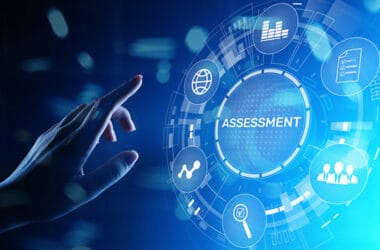Contents
Investing in modern technology solutions such as e-assessment tools is no longer just a trend – it’s a strategic necessity.
While the direct benefits of these tools are evident in the form of enhanced teaching and learning experiences, it’s their financial impact – in terms of Total Cost of Ownership (TCO) and Return on Investment (ROI) – that truly underscores their value.
This transition isn’t just about swapping paper for screens, it represents a revolutionary leap towards sustainable, scalable, and effective methods of assessing. Traditional assessments have presented various challenges that have been increasingly hard to ignore. The need for physical infrastructure, the substantial time investment for administration, and the manual processing of results have limited the scalability of such exams.
Pen and paper methods often fail to provide immediate feedback, which is crucial for ongoing learning and improvement. It also inherently lacks accessibility for people with disabilities and remote students. The inconsistency in grading, primarily due to human error, has also been a notable challenge in traditional assessments.
With e-assessment, on the other hand, students can identify gaps in their knowledge faster, enabling instant scoring and feedback, quicker course correction, and improved learning outcomes. This accelerated learning curve can lead to higher course completion rates, better grades, and improved institutional reputation – all of which enhance the value proposition for potential students, further driving revenue growth. Also, here are some strategies that institutions can employ to prevent cheating during exams.

Shifting from CapEx to OpEx
A crucial element to consider in the cost of e-assessment is the financial transition from Capital Expenditure (CapEx) to Operational Expenditure (OpEx). Historically, assessment systems have relied heavily on CapEx, with the investment required in physical infrastructure such as buildings, printers, and paper. This method often resulted in significant upfront costs and depreciation of assets over time.
In contrast, the cost of e-assessment primarily encompasses OpEx, which includes expenses for cloud storage, subscription-based assessment software, and ongoing service support. This shift results in more predictable and manageable costs, relieving institutions from the burden of ownership and maintenance of depreciating assets. The migration towards OpEx allows for a more sustainable financial model and offers increased flexibility, enabling educational institutions to adapt swiftly to emerging technological trends and pedagogical methodologies.
The move towards e-assessments signifies more than just a shift in the evaluation method; it’s an enhancement, marking a notable advance in addressing the challenges of traditional exams, all while aligning with the financial dynamics of the digital age.

The TCO of E-Assessments: A Breakdown
The Total Cost of Ownership (TCO) is crucial for any organization seeking to adopt or optimize an e-assessment system. TCO provides a comprehensive view of the direct and indirect costs associated with a product or service over its lifecycle – in this case, an e-assessment platform. It allows organizations to understand and predict the financial implications of implementing and maintaining e-assessments, incorporating the purchase price as well as implementation costs, operation, maintenance, and disposal costs. When considering TCO in the e-assessment context, it’s not just about the upfront purchase or subscription price of the platform but also about the long-term operational costs and the potential financial impact of the system on an organization’s efficiency and productivity.
Delving into the TCO of e-assessment platforms, direct costs include purchasing or subscribing to the platform, implementing the system, and ongoing maintenance. These are often the most visible and anticipated expenses. However, the indirect costs can be just as significant, if not more so. These can include expenses related to training staff to use the new system, technical support, time spent on administration, potential downtime, and even the impact on student or user satisfaction. Factors like data security and compliance, system upgrades, and integration with existing systems are crucial considerations that could affect the TCO of e-assessments.

Reducing the Total Cost of Ownership (TCO)
The cost of e-assessment can sound overwhelming, but there are ways of reducing TCO:
Utilizing cloud-based e-assessment platforms: These platforms typically require lower upfront costs and maintenance fees, as the cloud service provider manages the upkeep. Cloud-based platforms are inherently scalable and secure and come with built-in managed services, removing these aspects as overhead costs for the institution and its IT team. They ensure high uptime, reducing the risk of service disruptions during crucial exam periods. Cloud-based solutions are designed to handle future workloads, such as the integration of AI-based features, without incurring substantial additional costs.
Scalability: Choose a system that can scale according to your needs. Cloud-based solutions often provide easy scalability, allowing you to adjust resources based on demand.
Training and Support: Invest in training your staff to effectively use the e-assessment system. Well-trained staff can maximize the system’s potential and minimize errors, reducing long-term costs.
Automating question bank creation: Automation reduces the time and effort needed to input and organize questions manually. Some systems might incorporate AI and ML techniques to generate relevant questions based on set parameters, reducing the time teachers and administrators spend building tests and cutting labor costs.
Maintenance and Updates: Regularly update and maintain the system to ensure it remains efficient and secure. This prevents potential issues and the need for costly emergency fixes.
Interoperability and Extensibility: Choose a system that can integrate with your existing tools and platforms, reducing the need for additional software or complex workarounds.
Security Measures: Invest in robust security measures to protect sensitive data and prevent potential breaches. The cost of a security breach can far outweigh the initial savings of a cheaper solution.
Long-Term Planning: Plan for the long term. A system that aligns with your institution’s long-term goals and requirements can save costs associated with frequent system changes.
Vendor Partnerships: Establish strong relationships with your e-assessment vendors. This could lead to potential discounts, priority support, and a better understanding of your specific needs.
Analytics and Reporting: Utilize the analytics and reporting features of your e-assessment system to identify areas for improvement and optimize processes, potentially saving time and resources.
Bring Your Own Device (BYOD) and Accessibility: Choose a platform that allows individuals to use their personal devices, such as smartphones, laptops, or tablets, to access and interact with digital resources and services. This approach allows users to work or learn using devices they are comfortable with, potentially enhancing productivity and convenience. Also, prioritizing accessibility, you provide students with a system that is designed to be usable and understandable by individuals with diverse abilities and needs.
Keep an eye out for the second part of our blog series, where we’ll delve into various facets of how the impact of return on investment (ROI) becomes evident in educational institutions that are employing digital assessments.
Sources
“The Effectiveness of Online Learning: Beyond No Significant Difference and Future Horizons” Tuan Nguyen https://jolt.merlot.org/Vol11no2/Nguyen_0615.pdf
“6 top advantages of switching to online assessments” SFJ Awards https://sfjawards.com/6-top-advantages-of-switching-to-online-assessments/
“Advantages and Challenges of Using e-Assessment” Nuha Alruwais, Gary Wills, and Mike Wald https://faculty.ksu.edu.sa/sites/default/files/advantages_and_challenges_of_using_e-assessment.pdf
“Best Practices in e-Assessment” Buzzetto-Hollywood, Nicole. Alade, Ayodele https://www.researchgate.net/publication/220590704_Best_Practices_in_e-Assessment





